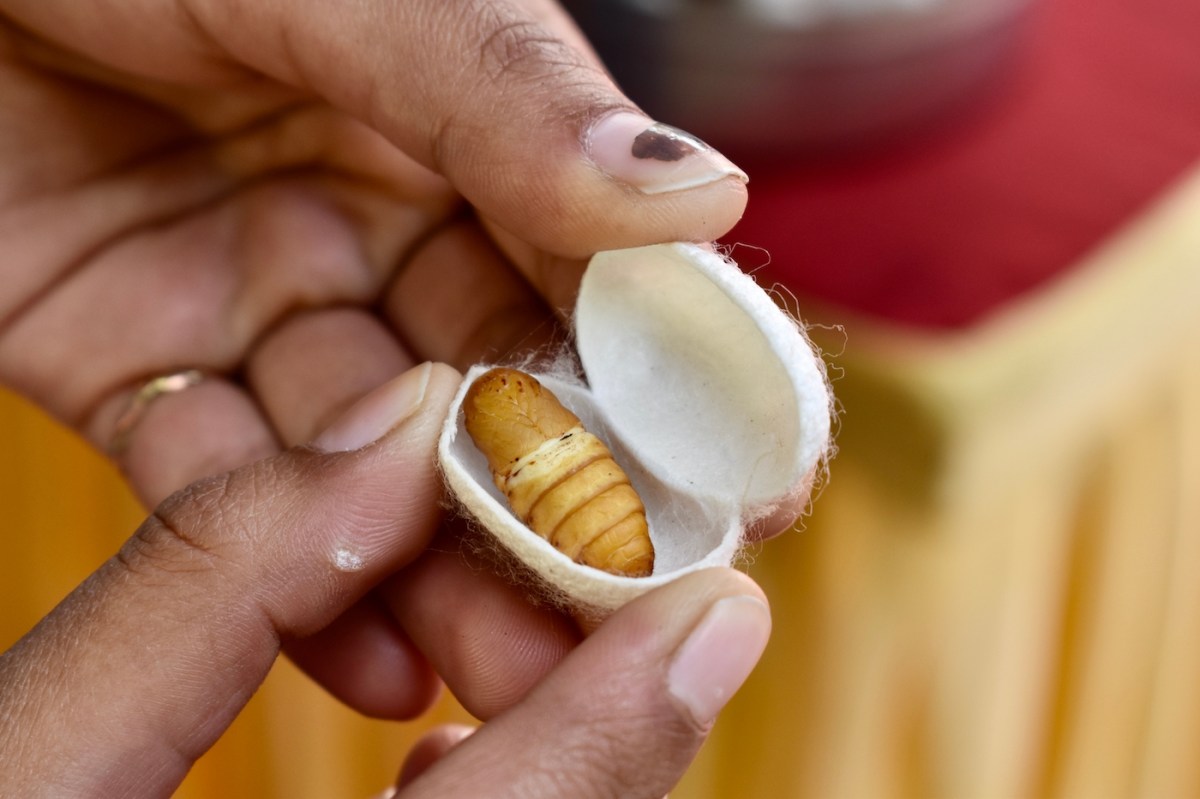The 4,000-Year History Of Humans And Silk
16:33 minutes

Silk is one of the most luxurious fabrics for clothing and bedding. Unlike cotton or linen, silk is made most commonly by insects—often the Bombyx mori, a domesticated moth that feeds on the leaves of mulberry trees. Humans have a 4,000-year history with the textile and the creatures that make it, as documented in the new book Silk: A World History.
Since silk has an unconventional origin as a secretion rather than a plant product, it has unique biological qualities that make it strong and enduring. And because it’s a natural protein fiber, it’s biodegradable, so scientists think it could have a future as a sustainable alternative to plastics and electronic parts.
Guest host Arielle Duhaime-Ross speaks with Dr. Aarathi Prasad, biologist and author of Silk: A World History. They discuss the ways humans have changed silk-creating creatures through domestication, future applications of the textile, and Prasad’s experience growing silkworms of her own.
Read an excerpt from Silk: A World History.
Join the SciFri Book Club email newsletter! We send emails a few times per week. If you want to learn more about what we’re reading, you can check out our official Book Club page.
Dr. Aarathi Prasad is a biologist and the author of Silk: A World History. She’s based in London, England.
The transcript of this segment is being processed. It will be available within one week after the show airs.
Kathleen Davis is a producer at Science Friday, which means she spends the week brainstorming, researching, and writing, typically in that order. She’s a big fan of stories related to strange animal facts and dystopian technology.
Arielle Duhaime-Ross is freelance science journalist, artist, podcast, and TV host based in Portland, OR.